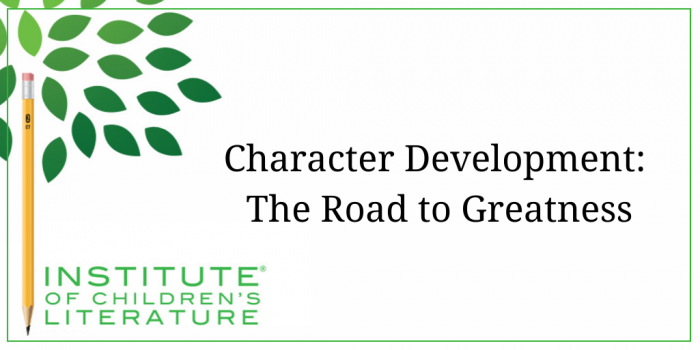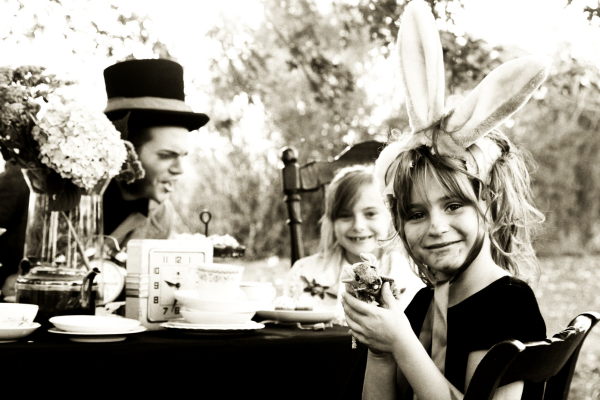1000 N. West Street #1200, Wilmington, DE 19801
© 2024 Direct Learning Systems, Inc. All rights reserved.

Whenever they talk about the most important things in a manuscript, two requests are almost sure to pop up from editors and agents: voice and great characters. Now voice is a conversation for a different day, but “great characters” can feel a little challenging when you’re writing. Just exactly what makes a character great and what do we writers need to do in order to write great characters? Let’s look at three sides of this.
 Great Characters Aren’t Necessarily Good
Great Characters Aren’t Necessarily GoodSome of the fictional characters who have stuck in our minds and become part of our culture aren’t exactly paragons of virtue. They often are mostly good (or at least lean toward goodness) but have decidedly bad habits or traits as well. Pure virtue can be a bit hard to relate to and therefore hard to believe in a character. As a result, most great characters are a little bit weak somewhere. Luke Skywalker was whiny. Han Solo was rash and a little dishonest. Wilbur the pig in Charlotte’s Web was not altogether bright and a bit passive. Max in Where the Wild Things Are made mischief of one kind and another. Artemis Fowl actually aspired to arch-villainy. So great characters are usually not purely good.
This is important. Real people are not purely one thing or another. And great characters are like that as well.
We know that relatability is important for readers to connect with a character, so it can become tempting to try to create a character that everyone can relate to. Surely an everyman character is going to be great. The problem with that is that trying to craft an everyman will make most writers do one of two things: craft a very bland character to avoid adding some characteristic that not everyone will have or craft a copy of themselves (since we often subconsciously see ourselves as the default everyman.) In other words, we end up crafting a character who blends in with the crowd (at least in our minds).

Great characters are often marked by what they refuse to do. Every great character draws a line in the sand somewhere, and that’s the place they will not be moved. Some draw the line really early and are loud, stubborn creatures, some only have one thing they protect above all else. But there’s always some place where they are not everyman. They are uniquely brave in their own way and on their own battleground.
Hemingway advised that we should create people, not characters. Well, people are difficult. They refuse to do what we want. Sure, they can be forced, but that always bends them a little, forces them into a shape they don’t fit well. Instead, when you’re dealing with a bunch of people brought together to complete any project, you have to shape the process and action around the people you have in order to reach the goal. If you try to force the people you have into your preset plan, you’ll never use them as effectively as you could. That is not the way to greatness.

Now obviously, that is only going to work if you know all of these people really well. So the time you spend getting to know your characters is essential. Know them until you can hear their individual voice in your head. Many writers do this by interviewing each character. Asking them questions and recording their answers. Lots of questions. The more you do this, the more the answers will begin to fall into the pattern and rhythms of the character. Once you find those patterns, hold onto them and let the character remain himself or herself as all the characters work together (or work against one another) through the story.
So if your goal is to create strong, memorable characters, characters who can be considered great. Keep in mind the things they will not be. But also think about what they will be. They’ll be a unique mix of good and bad. They’ll have something they value and protect, either a tangible thing or something in themselves. And you’ll have to deal with who they are and not try to cram them into an easy plot mold.
Great characters are a bit harder to create and work with, but ultimately, those are the characters people truly love.
With over 100 books in publication, Jan Fields writes both chapter books for children and mystery novels for adults. She’s also known for a variety of experiences teaching writing, from one session SCBWI events to lengthier Highlights Foundation workshops to these blog posts for the Institute of Children’s Literature. As a former ICL instructor, Jan enjoys equipping writers for success in whatever way she can.
1000 N. West Street #1200, Wilmington, DE 19801
© 2024 Direct Learning Systems, Inc. All rights reserved.
1000 N. West Street #1200, Wilmington, DE 19801
© 2024 Direct Learning Systems, Inc. All rights reserved.
1000 N. West Street #1200, Wilmington, DE 19801
© 2024 Direct Learning Systems, Inc. All rights reserved.
1000 N. West Street #1200, Wilmington, DE 19801
© 2024 Direct Learning Systems, Inc. All rights reserved.

1000 N. West Street #1200, Wilmington, DE 19801
© 2025 Direct Learning Systems, Inc. All rights reserved.

1000 N. West Street #1200, Wilmington, DE 19801
©2025 Direct Learning Systems, Inc. All rights reserved. Privacy Policy.
5 Comments